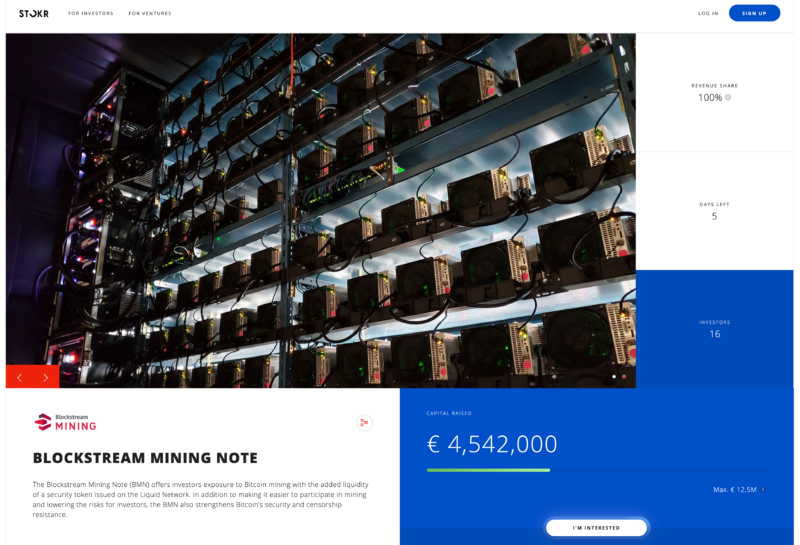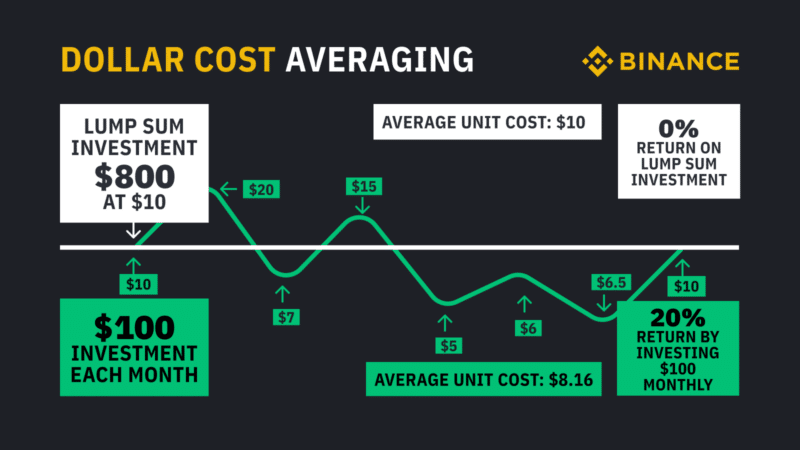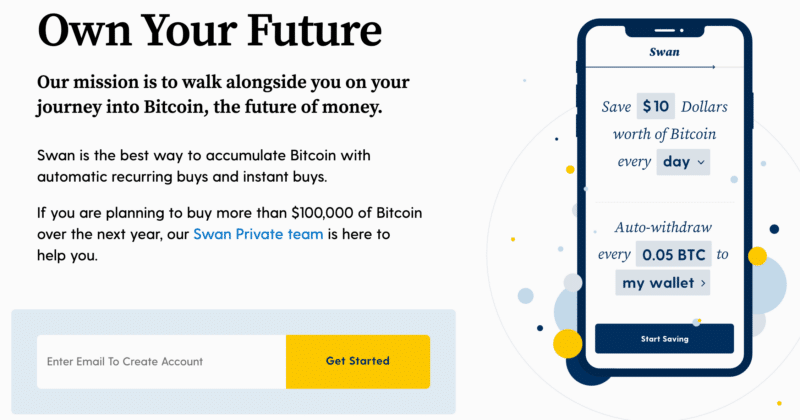
For most people, it is a better idea to just own a general stock market index. However, I like taking risks and love learning about companies and taking bets on their futures, so picking stocks suits my profile better.
On the other hand, I do use stock market index funds instead of keeping my money in the bank. Granted, that is also a risky strategy for most people, but I’m aware of the implications and am comfortable with the choice.
The way I look at the markets, I see 5 categories of stocks:
1. Growth Stocks
These are my favorite kind of stock. That doesn’t mean they’re the best or the right choice for you. I have a very high risk tolerance and love the feeling of ambitious growth, and these companies tick those check boxes for me. These are companies that reinvest all of their earnings into themselves to facilitate the growth of short/long term internal projects or acquisitions.
The best examples are classic tech stocks (also an area in which I have direct expertise), but with time, pretty much every company is becoming a tech company. What I mean by that is that if you look carefully at how companies operate, you will find that most companies already have their main asset and moat lying in the technology they’ve developed to help run their business, even though the end product or service might not be a highly technological one.
Examples: Shopify, Zoom, Facebook, Netflix
2. Cyclical Companies
These are stocks that are highly correlated with the overall state of the economy, because they provide services and goods that are elastic, meaning that people buy more of them when things are good and less when times are tough. Interestingly, over the COVID-19 lockdown period, we’ve seen some of these companies, especially those related to logistics and shipping) move inversely to the prevailing economic climate. Danaos was one such stock.
Apart from a few specific plays that I’ve made, like Danaos at the start of the lockdowns, I generally avoid these stocks.
Examples: Cruise liner stocks, airline stocks
3. Blue Chip Companies
Blue chips have been around for a long time, typically 25 years plus, have stable earnings and probably also have a stable to slowly rising dividend. with excellent reputations who have been around for a long time, have stable earnings and typically pay out dividends to investors.
They’re great if your goal is to achieve passive income to either supplement your salary, or to retire completely from your day job. You’ll find many blogs online about these kinds of companies. Just search for “dividend investor” and similar keywords. They’re probably the favorite investment of those who are enamored with the FIRE Movement.
Blue chip companies are not a personal favorite of mine, at least not for the time being. However, I think they’re a great option when you’ve reached your net worth target and want to derisk and live off your wealth.
Examples: IBM, Coca-Cola, 3M
4. Speculative Stocks
These are also favorites of mine. Such companies are characterized by having large potential upsides but also downsides. They are companies whose stock price tends to be extremely volatile and they will add definitely add extra risk to your portfolio.
I would only recommend investing in these types of companies if you are comfortable taking risks, have taken precautionary measures to protect your family’s wealth, and you don’t mind following the companies and their stock prices closely, in order to sell if the stock price pumps beyond your target price (I wouldn’t set limit sell orders as you might end up selling too early). I also think that you need to understand what the company does at a deep level in order to have any real conviction about the future of the company or the sector, else you’re just gambling away your money.
Examples: Mobility stocks like Tesla, Nio, Blade, biotech like CRISPR, and crypto plays like Microstrategy, Hut 8 Mining, Riot Blockchain.
5. Defensive Stocks
Defensive stocks are stocks of companies that have a solid reputation, have existed for many years, and provide non-cyclical products or services that people not only want but need. Thus they can be considered to be mostly impervious to the ups and downs of the market cycle.
I like having a few of these stocks sprinkled in my portfolio, and as my total stock valuation grows I expect that I will buy more of these and less growth or speculative stocks.
Examples: Walmart, McDonald’s, AT&T, Verizon, Proctor & Gamble
My Favorite Stocks
Now let’s move on to my favorite stocks, most of which are to be found in my portfolio. Note that I have many stocks that I like and follow, and will continue adding to this list, but I decided to publish the article rather leave it pending.
As I mentioned while describing the different kinds of categories of stocks, my favorites at the moment are growth and speculative stocks. You’ll see that most of my portfolio consists of these stocks, and most of them are tech-related, as that’s my area of expertise.
This is by no means a guide to what you should invest in, and I am sure there are a million arguments against my choices, but this is what works for me. When investing in any asset class, my strategy is to invest in businesses or assets that I like, because that is the only way to get myself interested in learning about them and provide enough enjoyment to invest on a long-term basis.
While my stock category preferences and individual sticks might not be a good fit for you, I really recommend taking the time to think about what excites you and whether you even want to be hands-on at all with your stock investments. If you have zero interest in stock picking and monitoring, you might be better off just picking an index fund and letting the market do its magic over time.
I will try to update this section at least once a year so you’ll have an idea of what I currently hold. I do move my allocations around and can sometimes exit a company altogether, sometimes for good, and sometimes temporarily when I consider that funds are better allocated elsewhere for a certain time period.
Activision Inc. (pending acquisition by Microsoft)
Activision Blizzard (NASDAQ:ATVI) is a video games company. They have a large portfolio of successful games, including Call of Duty, Crash Bandicoot, Spyro, Diablo and Overwatch.
The company has been regularly issuing dividends over the past years. The yield is below 1%, however, there have been raises announced and the company has a growing cash pile ($5.9 billion as at end of Q1 2021).
Alibaba Group
Alibaba (NYSE:BABA) is China’s largest e-commerce company and the top cloud-infrastructure service provider. It’s basically the Amazon of China. The group comprises several big names in the Chinese market, including Aliexpress, which is probably the most known e-commerce brand in the West.
The Alibaba stock tumbled in late 2020 and 2021 due to regulatory headwinds and fines decreasing investors’ confidence in the company. However long-term prospects are good as the company continues to expand its reach in different market sectors. The big risks are the US-China tensions as well as the regulatory risks in both the US and China for this company.
An alternative stock could be Baozun which is less subject to regulator scrutiny due to the nature of its business, or even Baidu, which can be thought of as the Google of China. You can also buy the EMQQ index ETF that includes not only many of the best Chinese tech companies but also those of other emerging markets.
Alphabet Inc.
Alphabet Inc. (NASDAQ:GOOGL) is an American multinational conglomerate headquartered in Mountain View, California. It was created through a restructuring of Google on October 2, 2015, and became the parent company of Google and several former Google subsidiaries. The two co-founders of Google (Sergey Brin and Larry Page) remained as controlling shareholders, board members, and employees at Alphabet. Alphabet is the world’s fourth-largest technology company by revenue and one of the world’s most valuable companies.
The main subsidiary holding is Google, but there are other notable companies in the group including YouTube, DoubleClick, Waze, Fitbit and Nest.
In 2021 they posted excellent results with a huge increase in revenue compared to the previous year. This is one of those stocks that I plan to continue piling cash into on a long-term basis as it has all the characteristics of a solid company with significant moats and a great leadership team.
Apart from being a solid financial bet, I also like this stock as Alphabet owns several companies that are a bet on the future. I’m the kind of person who is more likely to stay interested in something if I’ve got real money invested in it. So if you want to keep updated on what’s coming next, owning Alphabet gives you an extra incentive to stay informed. For example, one of the companies under Alphabet is Calico, which does a lot of research that aims to solve aging. That’s something that I think a lot about and a topic that I’m extremely interested in, so I love the fact that I can own a part of this company through my Alphabet holding
There can also be an argument made that owning Alphabet can be a good entry into startup investing. This is due to the fact that Alphabet also features two companies that focus on startups: GV and Google Capital.
GV is Alphabet’s early-stage venture arm. Formerly known as Google Ventures, GV has more than $4.5 billion under management and has invested in more than 400 companies, including Uber, Lime, and Slack.
Google Capital — now known as CapitalG — is Alphabet’s growth equity investment fund. Its mission is purely financial returns, but unlike GV, CapitalG focuses on later-stage startups. Some of its investments include Airbnb, Glassdoor, and Thumbtack.
As a potential risk for this stock, you should look at the lawsuits that the company keeps getting hit with, mostly concerning anti-competitive practices. On the other hand, the company has a huge cash hoard and its core businesses have a sustainable future ahead with lots more growth potential.
Amazon.com Inc.
Amazon (NASDAQ:AMZN) is another stock that I plan to continue investing in regularly over the next months and years. I think founder Jeff Bezos is an exceptional entrepreneur and leader and I am a big user of Amazon’s services myself since the early days. This means that I have become really familiar with its products and services over the years.
Amazon also has several branches like AWS and Whole Foods, apart from the Amazon.com online retailer site we all use. Like Alphabet, this is a stock that I consider a blue-chip stock that I can keep investing in every few months whenever I have any spare cash, without needing to do a ton of research before I put in the money.
Apple Inc.
Apple (NASDAQ:AAPL) is another stock where I’m a big fan of the company’s products and services, and while it feels more restricted in terms of its range of business when compared to Alphabet and Amazon, I also feel very comfortable DCAing into it over time.
Blade Air Mobility
Now here’s an interesting one. Blade (NASDAQ:BLDE) is one of my big bets for the future. Blade offers air transport, currently using helicopters, from the city centers to the airports of major American cities. There is lots of growth potential with this company, although a substantial risk too as it’s a novel concept that has also been hurt by the pandemic’s effect on travel. I acquired this stock while it was underperforming the S&P 500 index, but as I said I’m quite bullish on its growth prospects.
The company’s CEO, Rob Wiesenthal, has loads of experience. Until June 2012, Wiesenthal was Executive Vice president and Chief Financial Officer of Sony Corporation of America, Executive Vice President, Chief Strategy Officer, Sony Entertainment Inc., and Group Executive, Sony Corporation, leading corporate development, and mergers and acquisitions. From 2012 to June 2015, he was Chief Operating Officer of Warner Music Group. Read more about the company on the Blade Air Mobility website.
Coinbase Global
The Coinbase (NASDAQ:COIN) IPO was one of the most anticipated IPOs of 2021, but it ended up being a flop, as the price tanked soon after the IPO, probably due to unfortunate market timing (the Bitcoin price suffered a huge dip soon after the IPO). Nevertheless, I strongly believe that this company has a great future ahead. It’s been one of the early pioneers in the crypto space, building an exchange that was and is friendly with regulators. While other exchanges have chosen to operate on the edge of legality or to seek lax jurisdictions, Coinbase operated from the US and was happy to comply with all the required regulations, while also being cautious about which coins to list.
Over the years it has also diversified its services, and while most of the revenue still accrues from retail trading activity on the exchange, services like custody will probably play a bigger part in the future, especially since institutions feel comfortable about working with Coinbase, given its sterling reputation in the space.
ConocoPhilips
ConocoPhilips (NYSE:COP) is an energy play, specifically in the oil sector. I bought it following the dip due to COVID, with the idea that demand would return, production would resume and oil prices would re-stabilize, which is what eventually happened. I love to spot opportunities like these where temporary situations in the market hammer a company’s prices, because it’s usually an easy win if I’m able to wait a year or two. It has a huge cash position and will be distributing this back to shareholders through share buybacks and dividend distributions. Longer-term I see this being a cash cow for many years.
CRISPR Therapeutics
Headquartered in Zug, Switzerland, CRISPR Therapeutics (NASDAQ:CRSP) is a long-term play in the gene-editing therapy niche. This company is one of the pioneers of gene editing. Gene-based medicine is one of the big life improvements that I look forward to in the next decades, but these are still early days. Therefore I’m not counting on this company for stable returns in the coming years, but only use it in order to diversify my portfolio and because I am interested in the technology and its applications, hence owning a stock will increase my incentive to keep tabs on what’s happening in the space.
Danaos Corp.
Danaos (NYSE:DAC) has been one my best-performing stock picks so far, although it came as a surprise. I didn’t expect it to perform as well as it did. Based in Greece, the Company is an international owner of containerships, chartering its vessels to many of the worlds liner companies. This purchase was one that was clearly driven by the COVID issues in the supply chain. It was a bit of a wild bet but it certainly paid off so far.
Enbridge Inc.
Enbridge (TSX:ENB)(NYSE:ENB), in my opinion, is a great income and growth stock and I consider it to be a long-term investment that is on the safer side.
Enbridge hauls a quarter of all crude destined to the U.S. market, as well as one-fifth of the natural gas consumed by the U.S. market.
The company issues a nice quarterly dividend, has growth potential both in its core competency of energy pipelines as well as renewable energy.
In recent years, Enbridge has invested heavily in renewables, making it a significant player in this new market as well, where growth is to be expected.
Certainly, for those who are excited by yield-generating investments, Enbridge woul be a top pick.
Fastly
Fastly (NYSE:FSLY) is an edge computing and CDN provider. It has been a losing bet for me so far, since it lost most of its price momentum and went on a downward spiral this year. However, I remain bullish on the company. It’s clearly a growth stock that has performed better in the past thus driving up the price, while now the prospects don’t seem as hot anywhere, but it’s still a growing market and Fastly is a good company in terms of management and services offered.
Fidelity National Financial
Fidelity (NYSE:FNF) is an insurance provider in the US. It is actually one of the biggest companies in the housing market but it is overlooked by many inestors. This creates an opportunity as Fidelity is involved in nearly one-third of all home purchases and refinances in the United States. As the housing market is expected to remain hot for quite a while, Fidelity National Financial should continue to see large growth in its business. While the stock has outperformed the broader market over the past year, it still trades near its steepest discount in years, so I will probably hold this for a while.
Galaxy Digital
Galaxy Digital (TSX:GLXY), spearheaded by the charismatic Mike Novogratz, is the type of company I like. It’s involved in several aspects of cutting-edge technology, mostly in the crypto space. Galaxy Digital is a merchant bank that offers multiple cryptocurrency-focused services for institutional investors. The firm recently bought crypto custodian BitGo (another company I followed closely) for a whopping $1.2 billion.
Galaxy’s platform includes principal investing, asset management, trading, advisory services, and bitcoin mining. Galaxy has also partnered with Morgan Stanley and is in the process of getting listed on a US exchange. I’m very bullish about this company along with the crypto space in general.
Roblox
Roblox (NYSE:RBLX) is a company that sits at the intersection of gaming and the creator economy. This is a new and novel way of creating games at its core. While traditional computer games can take years and millions of dollars to produce, Roblox is allowing its own players to craft the game. Almost all of Roblox’s games come from its 8M creators.
There are two main elements that make up the Roblox experience:
- A game engine called Roblox Studio used by creators and developers to create games, social experiences and customization items.
- A game client and an app store called Roblox Client used by players to manage their friends’ relationships, customize their avatar and access an apps store to pick the next game they want to play.
It’s not a new company, having been founded in 2004 and launched the first version of the game on PC in late 2006. However, it has achieved a big yearly rise in popularity since 2016.
Nowadays it has 43M daily active players, half of which are under 12 years old (interestingly, almost with a 50/50 split in genders). These kids are hanging out with their friends in Roblox instead of on social media. While you might be concerned about these kids and think that maybe they would be better off socializing in the real world, I’d argue that socializing within a game is better than on social media anyway.
Here are the top 10 savings wish lists for American kids:
- Lego
- Phones
- Fortnite
- Roblox
- Nintendo Switch
- PlayStation
- Dolls
- Xbox
- Computer
- Bike
I think that list is enough evidence that gaming is huge and therefore I definitely want to make some heavy investments in the gaming space. Gaming has several sub-niches, with the metaverse being probably the newest.
Roblox is definitely a metaverse play for me, as I’m very bullish on metaverses within the next decades. Roblox is in a great position to be one of the first big players in this space. The fact that this company has been building its product for 17 years is a very important thing for me, since the dawn of a new niche in the economy is always filled with lots of hype and projects that never go anywhere. Roblox has what it takes to go all the way.
Zillow
Zillow (NASDAQ:ZG)(NASDAQ:Z) is a group of nine brands that cover almost every aspect of buying and selling houses.
I love how open the property market is in the USA, and Zillow is a prime example of how easier it is to do real estate transactions in the US compared to Europe, for example.
Selling a house to Zillow is pretty simple. Any willing party can jump on the website, type in their address, answer a few questions, and within days receive a “Zestimate.” If it’s satisfactory, the company conducts a free in-person evaluation, and if both parties agree, it will make a cash payment to close the deal.
That to me sounds like a huge saving in stress and bureaucracy. The overall ibuying trend has proven to be on a growth curve as well, so prospects for Zillow look good.
The stock has been punished in 2021 but long-term prospects remain good. While in the past the company has not been profitable as it focused on growth, this year we might see some profits. I’m happy to take a wait and see approach on this stock and remain confident for the coming years.
Zoom Video Communications
Zoom (NASDAQ:ZM) became a household name in 2020 during the pandemic, as education and workplace meetings moved online, relying on Zoom and similar tools.
However, I only invested once the pandemic was well underway, and ended up making some big losses after the stock tanked.
Growth for Zoom is slowing, and that is the major reason why the stock price has tanked, even though the company posted good profits.
I’m not sure about the stock’s future prospects to be honest. Maybe Zoom will get acquired by one of the big tech names like Facebook or Microsoft, or maybe it will find ways to continue growing spending among existing customers.
Other Favorite Stocks
I’ll list more favorites here and write about them in more depth when I have time:
- Block – payments and crypto rails
- Duolingo – language learning
- Hut 8 Mining Corporation – Bitcoin mining
- Interactive Brokers – stock broker
- JD.com Inc. – eCommerce
- Marathon Digital – Bitcoin mining
- Mastercard Inc. – payment technology
- Mazda Motor Corporation – motor vehicles
- Mercadolibre Inc. – eCommerce in latin america
- Meta Platforms Inc. – aka Facebook
- Microsoft Corp. – software
- National Atomic – uranium producer
- Netflix – home entertainment
- Nike – sportswear
- Nio – electric vehicles
- Nvidia – graphics cards
- Organon – women’s health
- Pinterest – social media
- Riot Blockchain – Bitcoin mining
- Robinhood Markets – stock broker
- Shopify Inc. – eCommerce platform
- Silvergate Capital – bank
- Snowflake Inc – cloud computing
- SoFi Technologies – financial services
- Squarespace Inc. – web publishing
- Taiwan Semiconductor – chip maker
- Teladoc Health Inc. – virtual healthcare
- Tesla Inc. – electric vehicles
- Unity Software – gaming
- Visa Inc. – payment technology
- Walmart Inc. – retail
- Wix.com – web publishing
Let me know your thoughts on whether I’m missing out on your favorite stocks or whether you disagree with my picks. All comments welcome.
The 4 Golden Rules of Effective Portfolio Management

If you have read any advice on how to properly manage your investments before, the advice to “diversify your portfolio” would almost always come up, and with good reason. The adage that warns us to ‘not put all of our eggs in one basket’ is a wise one because it guarantees that we at least get some of the eggs back should we lose any one of the baskets. Diversification is not a complete safeguard against asset loss, but it is one of the best ways to manage your risks in the long run.
There is, however, such a thing as bad diversification, which happens when you lose most if not all your assets to startups or investments that fail. Most equity crowdfunding websites have safeguards that allow investors to get their investments back, in whole or in part, should the campaign sponsor default. However, losses are a reality everyone has to deal with at one point or another when it comes to equity crowdfunding.
The only real way to combat bad diversification is to make sure that you are managing your portfolio correctly. Here are four easy rules that you can follow to achieve that goal:
-
Only Invest in Companies You Understand
This is very important. The more you know about the company and the sector in question, the better informed you are at predicting your outcomes and come up with justified valuations in turn. Also, the fewer things that you don’t understand about the business, the higher the transparency between you and the company will be. Granted there isn’t much information on the majority of startups available on equity crowdfunding platforms, so you will have to do as much research as you can about the industry and seek to get in touch with the people involved when you can.
-
Only Invest in Companies You Trust
The first point deals with the potential of the companies you invest in; this one deals with their track record. Have they committed fraud in the past? Is there something fishy going on with their financial statements? Are their rates too good to be true? You have to have some degree of confidence in a company’s ability to deliver on what they promised before investing, and there’s only one way to establish that, and that is by gaining insight through research.
-
Only Invest with Platforms with Failsafes

Nearly all platforms have some manner of failsafe for investor losses on the event that a company or campaign sponsor defaults or fails to reach the funding goal. Most equity crowdfunding platforms return the investors’ money in full should a campaign die before it is realised. Not all platforms are created equal, however, and some offer better protection than others. Right now, platforms that heavily vet the companies they curate for the site are far more secure than investor-led sites.
-
Only Invest What You Can Afford to Lose
This isn’t at all groundbreaking advice: as mentioned earlier, losses are an inevitability in any investment scheme but are more common in crowdfunding. As a rule, don’t invest any amount of money you are not prepared to lose, especially in a high-risk environment like equity crowdfunding. Remember that investing is a lot like gambling, and using money that puts food on the table to play poker is just plain irresponsible.
When it comes to investments of any kind, insight is synonymous with foresight. If there’s any secret to guarding against investment risks, it’s that the more you know about things as they are now, the better you can predict your turnouts in the future. For that, doing your research and keeping a level head is vital: the former protects you from bad investments, the latter keeps you from losing it all – always a winning combination.








